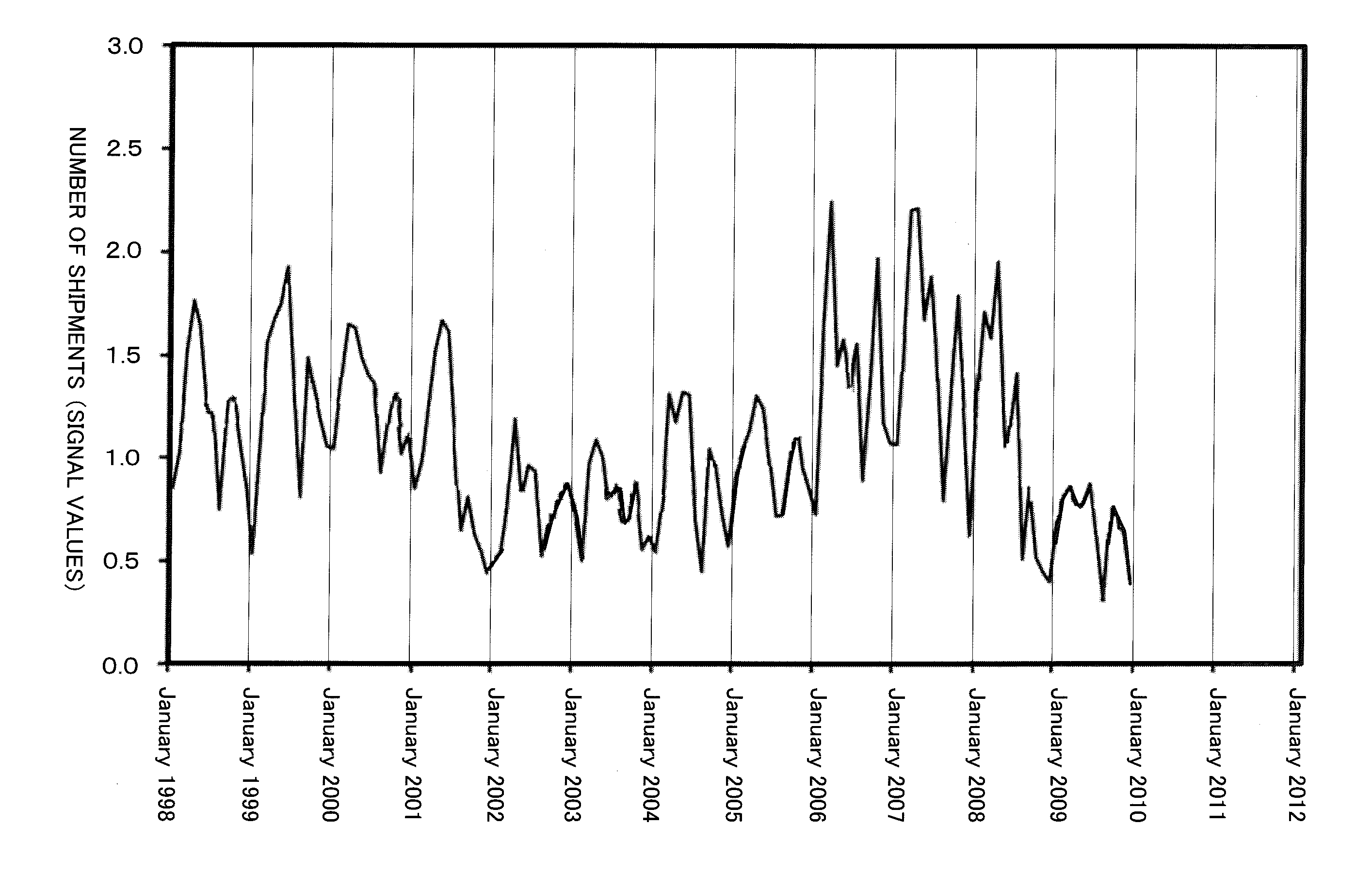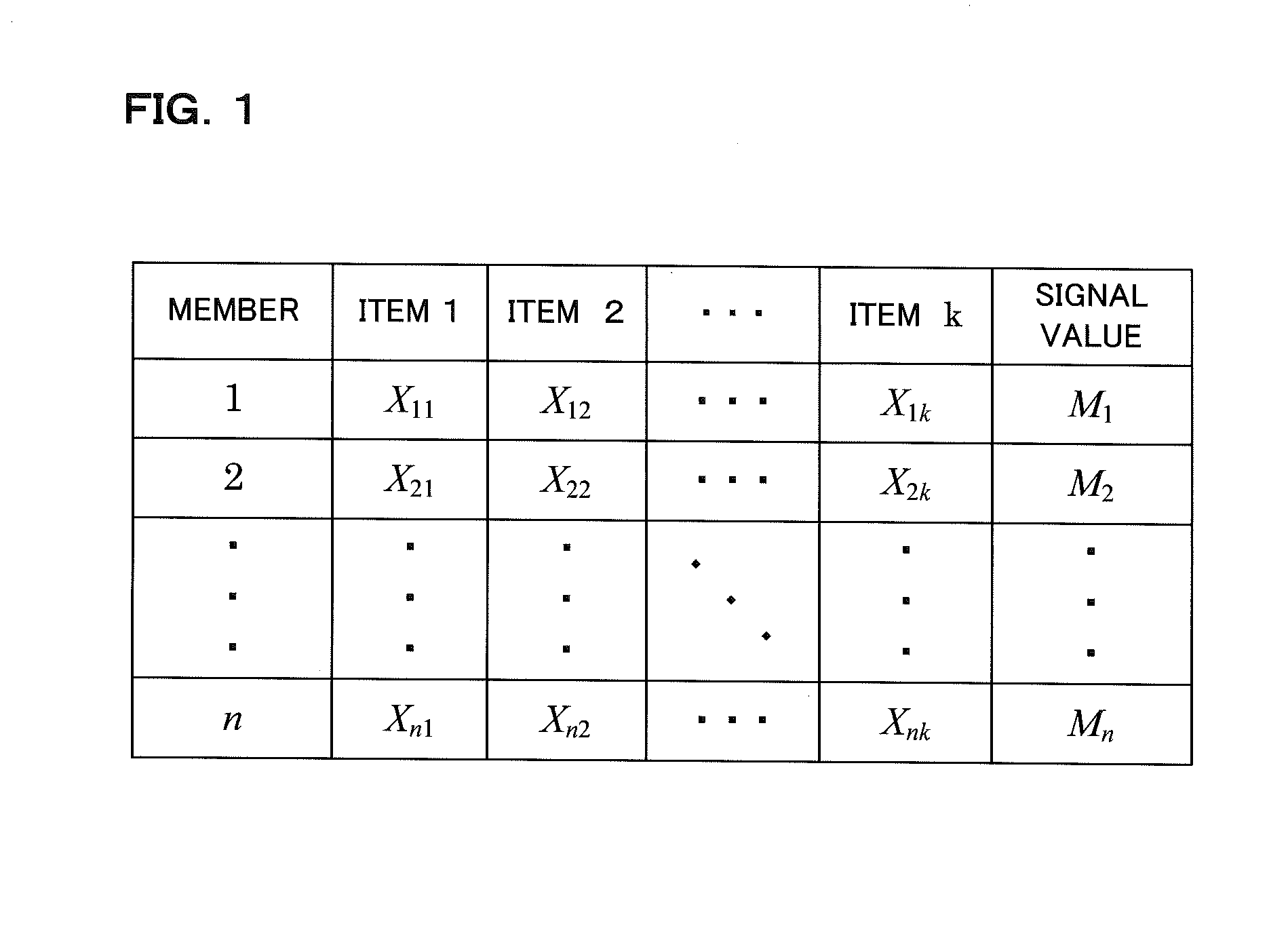Prediction device, prediction method, and computer readable medium
a prediction device and computer-readable medium technology, applied in forecasting, instruments, data processing applications, etc., can solve the problems of insufficient method, insufficient precision of prediction when selecting an item using the two-sided method, and difficulty in predicting items used for analysis, so as to increase the contribution to the effect and increase the prediction precision
- Summary
- Abstract
- Description
- Claims
- Application Information
AI Technical Summary
Benefits of technology
Problems solved by technology
Method used
Image
Examples
second embodiment
[0136]In the second embodiment, the period having the properties, of which the appearance is close to that of the properties of the trend of the signal value during the same period as of the data for the items that correspond to the signal value in the period to be predicted, is specified so that prediction is carried out from the relationship between the item data in the specified period and the signal value after a predetermined period in the configuration, which is described below.
[0137]Here, the structure of the prediction device according to the second embodiment is the same as that of the prediction device 1 in the first embodiment, and therefore, the structure thereof is not described here.
[0138]The prediction device 1 in the second embodiment predicts the signal value in the period to be predicted following the respective steps shown in the flow chart in FIG. 11. In the second embodiment, the process for selecting a signal period in step S104 in FIG. 11 is carried out in acc...
PUM
 Login to View More
Login to View More Abstract
Description
Claims
Application Information
 Login to View More
Login to View More - R&D
- Intellectual Property
- Life Sciences
- Materials
- Tech Scout
- Unparalleled Data Quality
- Higher Quality Content
- 60% Fewer Hallucinations
Browse by: Latest US Patents, China's latest patents, Technical Efficacy Thesaurus, Application Domain, Technology Topic, Popular Technical Reports.
© 2025 PatSnap. All rights reserved.Legal|Privacy policy|Modern Slavery Act Transparency Statement|Sitemap|About US| Contact US: help@patsnap.com



